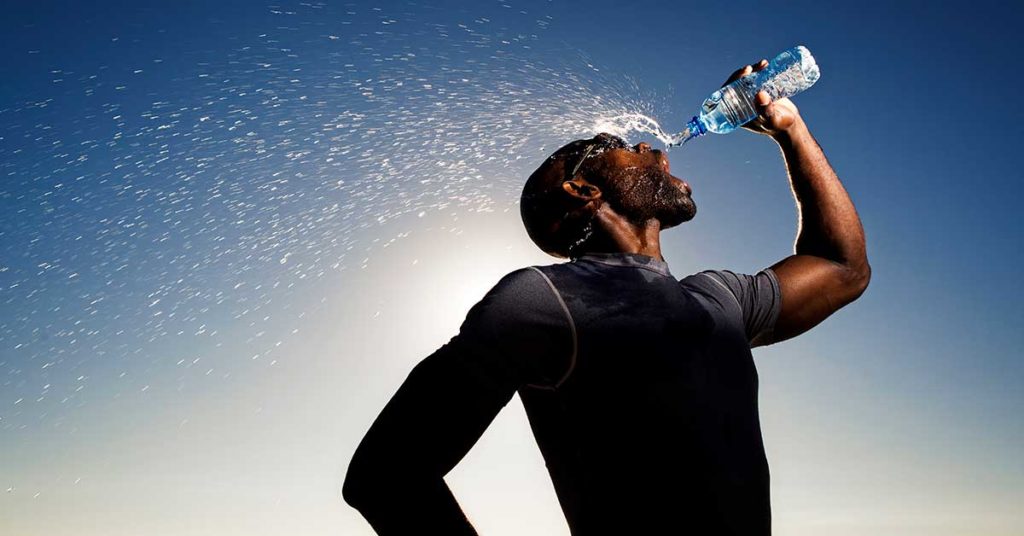How Hyponatremia May Be a Risk for You

Water is crucial to performance, but it turns out you can over do it
As we enter the start of an extremely hot summer, hydration becomes more of a priority. Rising temperatures can result in increased amounts of sweating which means you need to consume more water to keep performing at your best. However, taken too far, over-hydrating can negatively impact your performance and can even become dangerous.
Over-hydrating can result in low levels of sodium in your blood, known as dilutional hyponatremia or “water intoxication.” When this happens, your body’s water levels rise, and your cells begin to swell. This swelling can cause many health problems, from mild to life-threatening.
What is Sodium?
Sodium is an electrolyte that helps regulate the amount of water that’s in and around your cells. It helps maintain normal blood pressure, supports the work of your nerves and muscles, and regulates your body’s fluid balance.
Too much water in your body causes your blood to become watered down. As a result, water moves into body cells, causing them to swell. This swelling can cause swelling in the brain cells with a change in mental status that can progress to seizures or coma.
What are Symptoms of Hyponatremia?
Hyponatremia signs and symptoms may include:
- Nausea and vomiting
- Headache
- Confusion
- Loss of energy, drowsiness and fatigue
- Restlessness and irritability
- Muscle weakness, spasms or cramps
- Seizures
- Coma
What Causes Dilutional Hyponatremia?
Drinking too much water
Drinking excessive amounts of water can overwhelm your kidney’s ability to excrete water, resulting in lower sodium levels. Because you lose sodium through sweat, drinking too much water during endurance activities, such as marathons and triathlons, can also dilute the sodium content of your blood.
How to Avoid the Risk of Hyponatremia
Drinking sports beverages during demanding activities. If appropriate for you, consider combining water with sports beverages that contain electrolytes when participating in exercises or high intensity events.

Drink water in moderation. Drinking water is vital, so make sure you drink enough fluids. Just don’t overdo it. Thirst and the color of your urine are usually the best indications of how much water you need. If you’re not thirsty and your urine is pale yellow, you are likely getting enough water.
HEALTH DISCLAIMER
This blog provides general information and discussions about health and related subjects. The information and other content provided in this blog, or in any linked materials, are not intended and should not be construed as medical advice, nor is the information a substitute for professional medical expertise or treatment.
If you or any other person has a medical concern, you should consult with your health care provider or seek other professional medical treatment. Never disregard professional medical advice or delay in seeking it because of something that have read on this blog or in any linked materials. If you think you may have a medical emergency, call your doctor or emergency services immediately.

